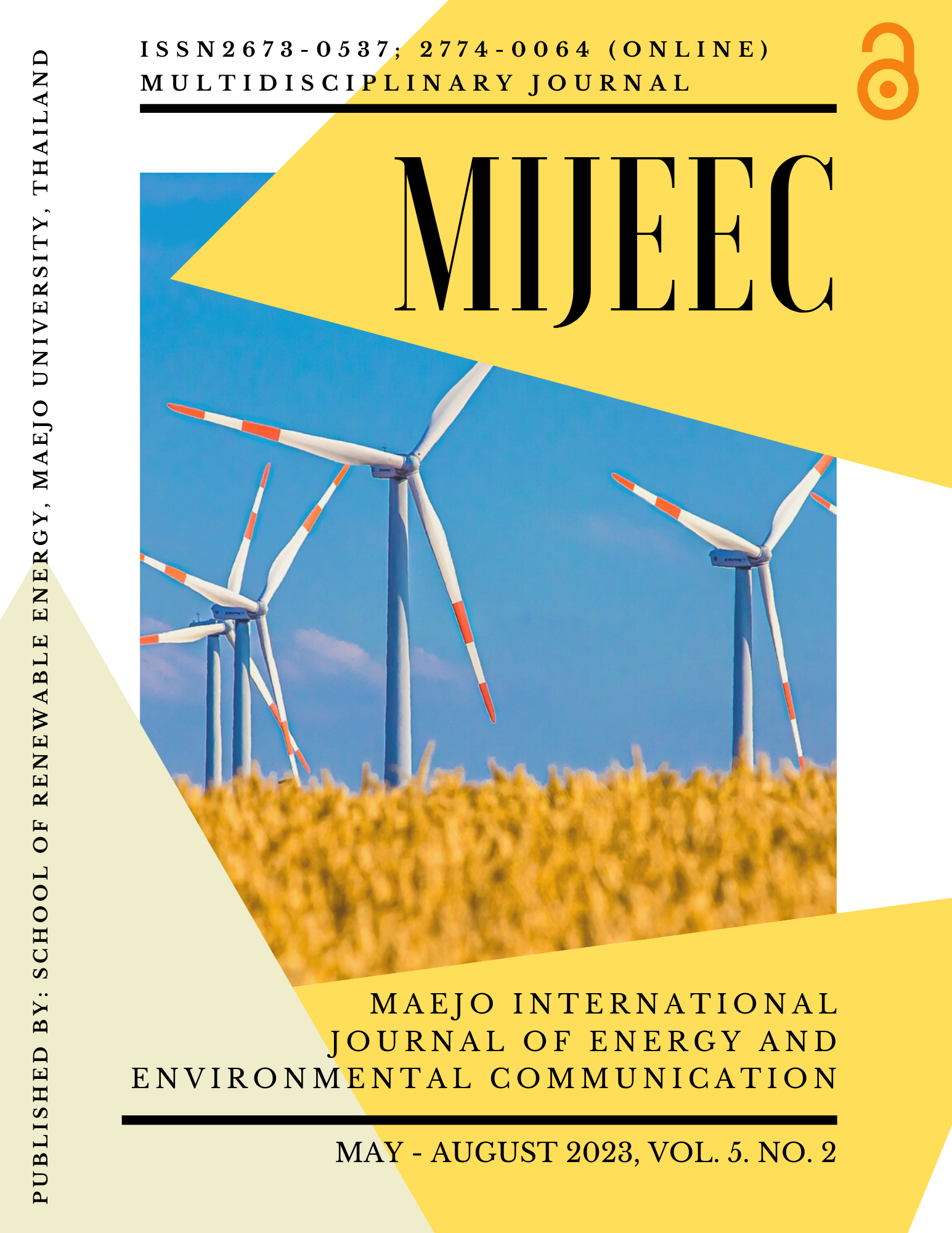Sustainability innovation and circular economy of freshwater hybrid catfish oil extraction
Main Article Content
Abstract
Integrating sustainability innovation and a circular economy model in extracting freshwater hybrid catfish oil can lead to economic, environmental, and social gains, aligning closely. Fish oil is an industrial product of great nutritional value due to its having long-chain polyunsaturated fatty acids. Moreover, it is highly valued for its prophylactic and therapeutic properties in nutritional and health fields. Moreover, these fatty acids are related to different neuronal functions, and their absence is associated with diverse inflammatory processes and the precarious development of neurons in human patients. Fish oil from the body parts of the hybrid catfish' frozen adipose tissue was extracted using the conventional cooking method, and a screw compressor squeezed the prepared sample and then steamed it to separate solid and oil portions to determine quantitative yield. The GC-MS method characterized the obtained total extracts for the qualitative and quantitative determination of the presence of fatty acids. Oil contents of adipose tissues were saturated fatty acids, monounsaturated fatty acids, and unsaturated fatty acids 37.99±0.41%, 48.43±1.75%, and 13.58±1.33%, respectively. The oil was allowed to examined physical-chemical properties and microbial activities. The results show that the hybrid catfish studied are a rich source of omega-3, omega-6, and omega-9 polyunsaturated fatty acids.
Article Details

This work is licensed under a Creative Commons Attribution-NonCommercial-NoDerivatives 4.0 International License.
Copyright © 2019 MIJEEC - Maejo International Journal of Energy and Environmental Communication, All rights reserved. This is an open-access article distributed under the terms of the Creative Commons Attribution-NonCommercial- Attribution 4.0 International (CC BY 4.0) License
References
Abomohra, A. E. F., Elsayed, M., Esakkimuthu, S., El-Sheekh, M., & Hanelt, D. (2020). Potential of fat, oil and grease (FOG) for biodiesel production: A critical review on the recent progress and future perspectives. Progress in Energy and Combustion Science, 81, 100868.
AOAC (2016). Official methods of analysis of AOAC International. Rockville, MD: AOAC International.
AOCS (1993). Oil Methods and Recommended Practices of the American Oil Chemists Society, fourth ed., vol. 1, AOCS Press, Champaign.
Ataguba, G. A., Kamble, M. T., & Salin, K. R. (2018). Food industry by-products as protein replacement in aquaculture diets of tilapia and catfish. Food Processing By‐Products and their Utilization, 471-507.
Bako, T., Victor, U. I., & Awulu, O. (2017). Criteria for the extraction of fish oil. Agricultural Engineering International: CIGR Journal, 19(3), 120-132.
Bostock, J., McAndrew, B., Richards, R., Jauncey, K., Telfer, T., Lorenzen, K., Little, D., Ross, L., Handisyde, N., Gatward, I., & Corner, R. (2010). Aquaculture: global status and trends. Philosophical transactions of the Royal Society of London. Series B, Biological Sciences, 365(1554), 2897-2912.
Calder, P. C. (2017). Omega-3 fatty acids and inflammatory processes: from molecules to man. Biochemical Society Transactions, 45(5), 1105-1115.
Das, U. N. (2006). Biological significance of essential fatty acids. Journal-Association of Physicians of India, 54(R), 309.
Durmuş, M. (2018). Fish oil for human health: omega-3 fatty acid profiles of marine seafood species. Food Science and Techno logy, 39(supl.2), 454-461.
Eke-EJiofor, J., & Ansa, E. J. (2018). Effect of extraction methods on the quality characteristics of catfish (Clarias gariepinus) Oil. American Journal of Food Science and Technology, 6(5), 199-203.
Fabrice, T. (2018). Fish domestication: An overview. In Animal Domestication. IntechOpen. DOI: 10.5772/intechopen.79628
Grundy, S. M. (2012). Cholesterol: Factors Determining Blood Levels. In Encyclopedia of Human Nutrition (pp. 335-340). Elsevier Inc.
Habib, A. S. M. A., & Sarkar, P. (2016). Extraction and identification of PUFA from African catfish (Clarias gariepinus) skin. International Journal of Fisheries and Aquatic Studies, 4, 312-317.
Jabeen, F., & Chaudhry, A. S. (2011). Chemical compositions and fatty acid profiles of three freshwater fish species. Food chemistry, 125(3), 991-996.
Karmakar, S., Sahay Khare, R., Ojha, S., Kundu, K., & Kundu, S. (2012). Development of probiotic candidate in combination with essential oils from medicinal plant and their effect on enteric pathogens: a review. Gastroenterology Research and Practice, 2012.
Kris-Etherton, P. M., Harris, W. S., & Appel, L. J. (2002). Fish consumption, fish oil, omega-3 fatty acids, and cardiovascular disease. Circulation, 106(21), 2747-2757.
Li, G., Sinclair, A. J., & Li, D. (2011). Comparison of lipid content and fatty acid composition in the edible meat of wild and cultured freshwater and marine fish and shrimps from China. Journal of Agricultural and Food Chemistry, 59(5), 1871-1881.
Song, G., Zhang, M., Peng, X., Yu, X., Dai, Z., & Shen, Q. (2018). Effect of deodorization method on the chemical and nutritional properties of fish oil during refining. LWT, 96, 560-567.
Tongmee, B., Whangchai, N., Tongsiri1, S., & Unpaprom, Y. (2020). Replacement of fish meal using pig manure as protein source for Nile tilapia culture. Maejo International Journal of Energy and Environmental Communication, 2(2), 8-13.
Wall, R., Ross, R. P., Fitzgerald, G. F., & Stanton, C. (2010). Fatty acids from fish: the anti-inflammatory potential of long-chain omega-3 fatty acids. Nutrition reviews, 68(5), 280-289.
Wangcharoen, W., Mengumphan, K., & Amornlerdpison, D. (2015). Fatty acid composition, physical properties, acute oral toxicity and antioxidant activity of crude lipids from adipose tissue of some commercialized freshwater catfish. Chiang Mai J. Sci, 42, 626-636.
Whangchai, N., Ramaraj, R., Whangchai, K., Nomura, N., & Pimpimol, T. (2020). Innovative biorefinery concept for biogas-based digestate with rice bran protein-rich feed ingredient for tilapia production. Biomass Conversion and Biorefinery, 1-7.
Whangchai, N., Chitmanat, C., Ramaraj, R., & Itayama, T. (2018). Effects of water flow rate and water quality on tilapia culture in the Mae Ping River, Thailand. Chiang Mai Journal of Science, 45(3), 1318-1322.






